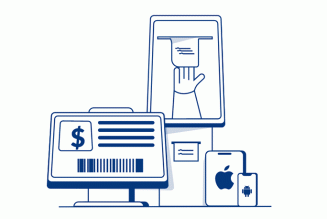Are all satellite services created equal? Are the low latency services promoted by Starlink the holy grail to a mass market for satellite broadband? What is really required to support business connectivity requirements, and what are the real details to be considered?
As media awareness grows and the market realises the potential of satellite services, it is becoming increasingly important to discuss architecture specifics in order to guide application design and network implementation considerations.
Smart Satellite Services
Current satellite services are much more advanced than previous generations. It is no longer just about the myths that satellite is slow, expensive, and has a latency problem. Satellite platforms have evolved way past those days and are now advanced IP connectivity solutions providing a real alternative for business and enterprise connectivity.
Smart satellite services are satellite services that no longer just operate as “bent pipe” models as they used to rather, they include network architecture functions such as Layer-2 options, VLANs architectures, advanced quality-of-serve options, public IP number allocations, etc. It is these additional features that enable network architects to seamlessly integrate satellite networks with end-user core networks, which are fundamental to unlocking the business market for next-generation satellites.
For further context, let’s have a look at the capability of smart satellite networks to provide Layer-2-over-satellite services and see how smart satellite networks differ from other satellite services to open new end-user implementations.
What is Layer-2-over-satellite (L2oS)?
The key point here is that smart satellite services offer Layer-3 as well as and Layer-2 connectivity options. To understand the benefits of Layer-2, we firstly need a basic definition of Layer-2 in IP networks.
Layer-2, also known as the Data Link Layer, is the second level in the seven-layer OSI reference model for network protocol design. Layer-2 is the network layer used to transfer data between adjacent network nodes in a wide area network or between nodes on the same local area network. Generally speaking, Layer-2 is a broadcast Media Access Control (MAC) level network. Layer-3, however, is a segmented routing over an internet protocol (IP) network.
Layer-2-over-satellite is thus the capability of smart satellite services to implement a Layer-2 network which enables the network routing to be done by the end-user network endpoints. This greatly simplifies the satellite network architecture and enables very specific application benefits.
An unexpected complication
Perhaps unexpectedly, yet very logically, follows that smart satellite services need smart satellite network architects and smart satellite implementation teams within smart satellite business models. This is really the underlying issue that will drive the positive change within the satellite industry as a whole and map the road for full adoption of the emerging satellite services.
The ability to apply current and emerging satellite services to unlock user markets will be determined as much by the satellite features and specification, as by the capabilities and business models of the service providers. To simply follow the old ways of offering satellite services from a pre-set product menu with a one-size-fits-all structure will not lead to market success, even with latencies at fewer than 50msec.
Conclusion
The satellite landscape is changing with technology barriers moving and being removed. Smart Satellite Services such as the Twoobii service operating on the Intelsat Flex platform is just the beginning of the new generation of services coming.
As a niche “off-grid” service provider, Q-KON is very much aware of the dynamic and is working hard every day to build the smart teams required to service our future customers using smart satellite services.
By Dr Dawie de Wet, Group CEO of Q-KON and Chief Engineer for Twoobii











